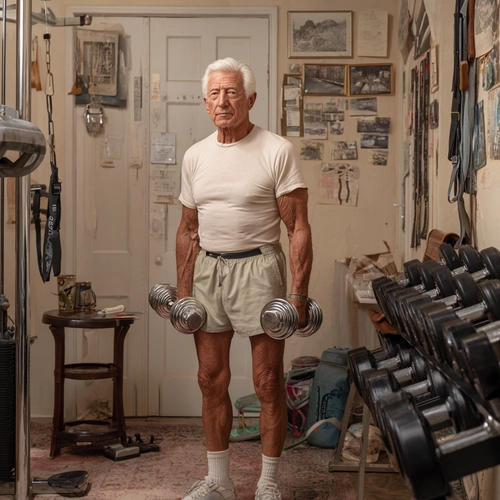- by The Memory Exam Team
- April 14, 2025
- Exercise & the Brain
- Health
- Brain Health
- Education

Track Your Progress. Strengthen Your Recall.
Pairing movement with memory exercises is one of the most powerful ways to build mental stamina and support lifelong brain health. The Strength + Speech Log is your personal tool to stay on track. Simple to use and designed for all fitness levels, this printable guide helps you document your sessions, memory challenges, and how you felt afterward—so you can monitor your growth and stay motivated.
How to Use the Strength + Speech Log
This log is designed to accompany the routines described in Part 3: Strength Training for Sentence Structure in our blog series Your Brain’s Best Age. It provides a flexible framework for practicing brain-boosting movement and speech exercises.
1. Track Your Exercises
Check off which of the following you completed:
- Chair Story Squats – tell a story out loud, adding a detail with each squat
- Pantry Row Word Pairs – practice word associations while doing light rows
- Soup Can Curls – name words from different categories while curling light weights
2. Choose a Memory Task
Rotate through verbal challenges like:
- Naming animals, foods, or places
- Recalling countries or U.S. states
- Saying paired words like “salt and pepper” or inventing your own
These help build verbal fluency, working memory, and mental flexibility.
3. Tell a Story
Use the “Story of the Day” section to practice sequencing, memory, and expressive speech. Add a new detail each round to stretch your recall.
4. Practice Word Categories
Write down as many words as you can from categories such as:
- Foods, animals, and places
- People, objects, and actions
This is great for warming up your brain and expanding recall vocabulary.
5. Reflect on How You Felt
Use the final section to note how you felt after the routine. Over time, this helps you track improvements in clarity, energy, and confidence.
Why It Works
Combining strength and speech challenges activates multiple areas of the brain at once. Tracking your progress builds consistency—and consistency builds results.
Download the log. Use it 2–3 times per week. Speak your way to a stronger brain.
Download the Speech + Strength Log
Strength + Speech LogRelated Posts

Strength Training for Sentence Structure: Build Mental Stamina
Your brain’s best age: A complete guide to cognitive wellness - Part 3
Have you ever started telling a story—only to lose your place halfway through? Or felt surprisingly drained after a long conversation? These lapses aren’t just signs of aging; they’re signs that your brain, like your body, might need a little strength training.
In this post, we explore how resistance-based movement can do more than build muscle—it can build your brain’s ability to hold, organize, and express information with clarity and ease. You’ll discover simple, no-equipment exercises that improve verbal flow, sharpen memory, and boost your confidence in everyday communication. Because strength isn’t just about lifting—it’s about lasting.

The Power of Knowing: Why Memory Awareness Matters
How do you know if your memory is already changing?
As we move through our 50s, 60s, and beyond, many of us notice changes in how we remember things. Names might take longer to come to mind. We might walk into a room and forget why we went there. These moments are common, but they can also be worrying.
What's different today is that we have better ways to understand these changes ways that are private, comfortable, and scientifically valid.
Memory connects us to our lives. It holds our stories, our relationships, and our sense of who we are. Protecting it is one of the most important things we can do as we age. At-home memory testing offers a gentle way to stay aware of your cognitive health, not to scare you, but to give you the information you need to make good decisions about your well being.

The Walking-Memory Connection: How Step Patterns Boost Word Recall
Your brain’s best age: A complete guide to cognitive wellness - Part 2
Ever had the perfect word come to you mid-walk? It’s not just fresh air working magic—it’s science in motion. New research reveals that how you walk can shape how you think. When rhythmic steps pair with simple mental tasks, your brain doesn’t just respond—it thrives.
In this second installment of Your Brain’s Best Age, we explore how syncing your stride with memory-boosting exercises can improve word recall, sharpen focus, and strengthen your mental clarity—starting with your very next walk.